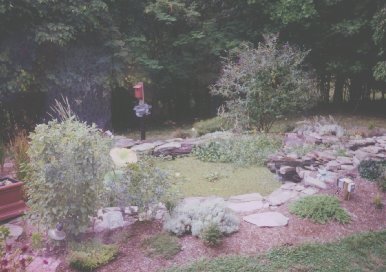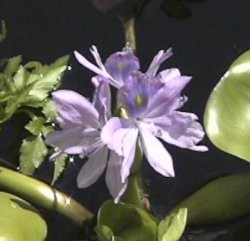 |
 |
|
|
Last Updated: 2/21/14

Introduction to Floating Plants
Tropical Floating Plants
For a list of hardy floating plants, go to the floating plants list but visit the explanation of the lists first.
For pictures of water hyacinth, water lettuce, and more plants, visit my pond pictures page.
To read about overwintering various floating plants, go to the overwintering pond plants page.

Floating plants are those that do not take root and float on the water. Their roots hang loose in the water. They obtain all of their nutrition from the water column. Thus, they are great competitors for algae. They also receive maximum light and block out light to the algae and submerged plants below. Water hyacinth and water lettuce are best known for removing excess pond nutrients, providing shade, and reducing algae blooms. Unfortunately, they can grow out of hand in tropical regions and die off in temperate regions, necessitating the purchase of more every year. Salvinia, another tropical floater, did an excellent job in my pond of covering the surface one year. Unlike hyacinth, the fish did not seem to want to eat it. Duckweed also does a good job but fish love to eat it (duckweed can be added as a supplemental food for goldfish and koi). Pond suppliers sell mesh enclosures to protect floating plants. I put my floaters in there in spring. Once they fill up the net, I let some go. Much of the let-go plants are eaten but some survive. My fish do not seem to eat salvinia as it took over 90% of the pond surface in late 1998. Fish love to spawn in the roots of water hyacinth and water lettuce. By fall, my big pond is usually mostly covered in water hyacinth and water lettuce, hundreds of plants from just three of each that I buy in the spring eahc year. When the cold hits, I throw it out by the wheelbarrow's full.
Pond at the Maryland Zoo on 8/19/10, 100% covered in duckweed.


This is a short list of the common tropical floating plants. See my tropical plant list for more tropical plants.
See my pond newsletters for a little bit more information on water hyacinth and water lettuce.
The water poppy, Hydrocleys nymphoides, is a common lily-like tropical plant.
The Paradise Water Gardens catalogs is loaded with tropical floaters and lily-like plants. Call 1-800-955-0161 for a catalog.
For fun, check out this site on weird duckweeds from India, Australia, and South America that includes five duckweeds (wolffia) "that are among the most minute and totally bizarre on earth."
Some submerged plants will float if not anchored and continue to grow. These include anacharis and hornwort. See the submerged plant page for information on them.
|
|
Go to the main plant page (full index).
Go to the aquarium algae index.
Go to the pond algae index.
Go to the aquarium plant index.
Go to the pond plant index.
See the master index for the plant pages (quick index).

|

|
E-mail RobynCopyright © 1997-2026 Robyn Rhudy |

|
 |